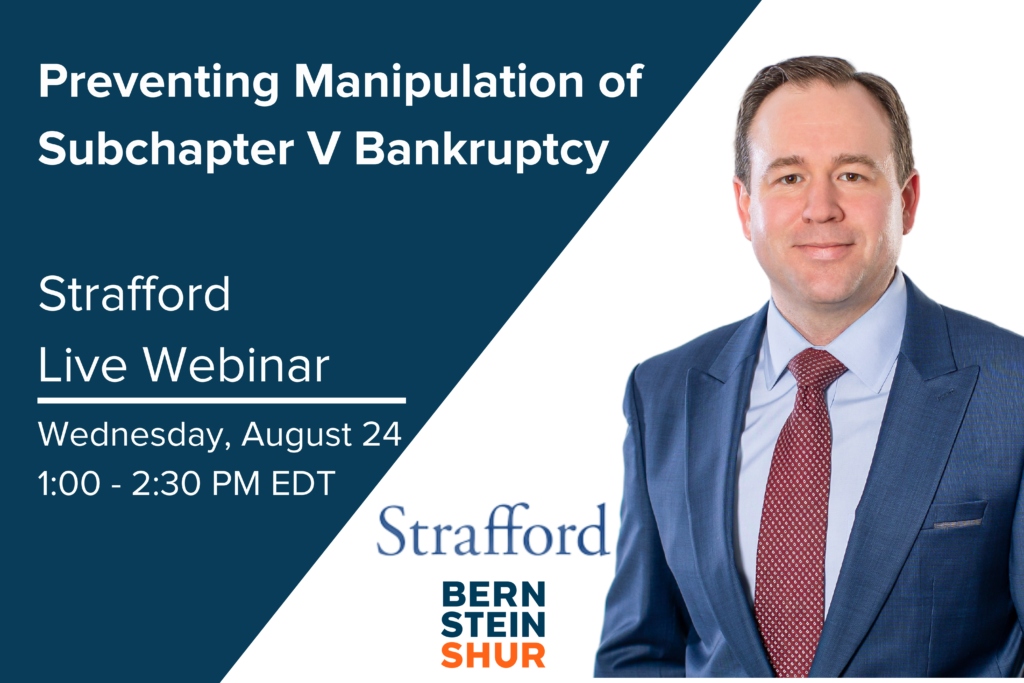RETURN TO NEWS & PUBLICATIONS
 This CLE webinar addressed how creditors can prevent the manipulation of Subchapter V by challenging the election eligibility and by paying careful attention to the projected disposable income. The panel discussed options for small businesses after the Bankruptcy Threshold Adjustment and Technical Corrections Act, guided counsel through eligibility requirements under Subchapter V, and reviewed risks related to the projected disposable income standard for confirmation.
This CLE webinar addressed how creditors can prevent the manipulation of Subchapter V by challenging the election eligibility and by paying careful attention to the projected disposable income. The panel discussed options for small businesses after the Bankruptcy Threshold Adjustment and Technical Corrections Act, guided counsel through eligibility requirements under Subchapter V, and reviewed risks related to the projected disposable income standard for confirmation.
Adam Prescott Panelist for Strafford Webinar, “Preventing Manipulation of Subchapter V Bankruptcy”
DATE: 24 AUG 2022
TIME: 1:00 - 2:30 PM EDT
LOCATION: Live Webinar - recording available
Get Directions »
 This CLE webinar addressed how creditors can prevent the manipulation of Subchapter V by challenging the election eligibility and by paying careful attention to the projected disposable income. The panel discussed options for small businesses after the Bankruptcy Threshold Adjustment and Technical Corrections Act, guided counsel through eligibility requirements under Subchapter V, and reviewed risks related to the projected disposable income standard for confirmation.
This CLE webinar addressed how creditors can prevent the manipulation of Subchapter V by challenging the election eligibility and by paying careful attention to the projected disposable income. The panel discussed options for small businesses after the Bankruptcy Threshold Adjustment and Technical Corrections Act, guided counsel through eligibility requirements under Subchapter V, and reviewed risks related to the projected disposable income standard for confirmation.Outline
- Overview of options for small business
- Challenging eligibility
- Challenging projected disposable income
Benefits
The panel will discuss these and other complex and critical issues:
- Does a U.S. subsidiary of a parent company that is publicly traded on a foreign exchange qualify for Subchapter V?
- Would foreign-owned U.S. subsidiaries funded by their foreign parent be eligible under Subchapter V?
- What debts are counted in the debt limit?
- What options exist for challenging whether claims are liquidated or contingent?
- How should projected disposable income be calculated?
For more information and to access a recording of the webinar click HERE.
For more information on Adam and his practice, click HERE.
